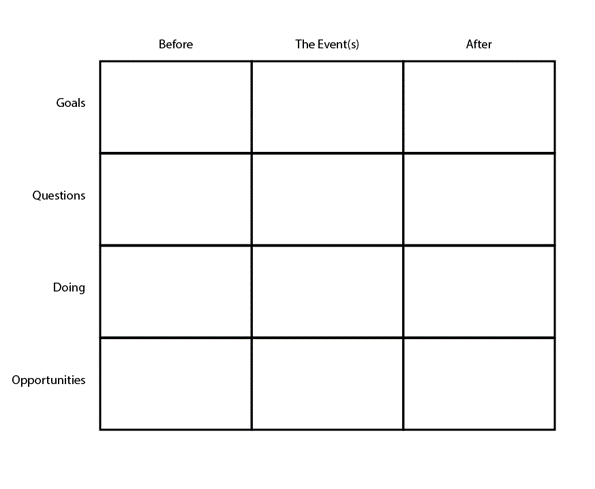Date Published September 19, 2019 - Last Updated December 17, 2019
The support ticket is the lifeblood of any service desk. To many, it is the end, the beginning, the alpha and the omega, and the reason we wake up every day. Alright, that may be a bit of an exaggeration, but the importance of our tickets and ticketing system cannot be understated. Tickets are how we document work, report on metrics and KPIs, and communicate with our customers. But in elevating tickets to that place high on a pedestal, we forget what the ticket really represents—our customers.
The support ticket is the lifeblood of any service desk.

The Customer Journey
For every ticket we receive, there is a story that begins before it enters our queues and ends long after it is resolved. That story, in the UX world, is referred to as a customer journey. How did the ticket come to be, and what things might happen after we close it? As a service desk with a never-ending supply of tickets, it can be easy to focus solely on our ticket queues and ourselves as paper-pushers, processing work and closing it out. But the customer journey is important because their story can help us to not only empathize better with our users, but to also work toward providing better service and preventing recurrence.

The customer journey follows the user as they interact with us as a company that provides service(s) to them. We call those interactions, or fragments of the journey, touchpoints. These touchpoints are the many interactions with our people, services, systems, or technology choices that our organization has made.

Consider the following example:
- A user is browsing Instagram and they see an ad for a product that our company sells.
- The user then goes to Twitter to check what other people are saying about it.
- They chat with a friend who they noticed was mentioning the product and hear good things about it.
- Hearing only positive things, they go to our website and add the item to their cart.
- From their cart, they are passed to a third-party checkout and payment processing system and finalize their order.
- Their order details are finalized and sent off to the shipper who…drops and mangles the package in transit.
- The user contacts our support desk for support for this issue.
In this case, we were able to map out at least seven different touchpoints where the user was handed off from one process or system to another. We design them to be as seamless as possible, and even though the shipper was the one who ended up making a mistake, it impacts our customers perception of our company and our reputation.
Why Map Customer Journeys?
A primary reason to map our customer’s journey is to identify these touchpoints and figure out opportunities for improvement from the mapping. We can figure out our strengths and how we can keep doing them well and our weaknesses that we can improve upon.
In the prior example, something could have gone wrong at any phase and been an area for improvement. Our ad on Instagram could have forgotten a link to our site, or the payment processor could have been offline temporarily. Any of these things could potentially impact us and our users and generate tickets for us.
We can also map multiple journeys over time and start to notice trends. If we notice across all of our customer segments that shipping is a weak spot for us, we may want to consider switching carriers.
It isn’t entirely feasible to map every individual customer’s journey, so what we can do instead is aggregate our customers into groupings by commonalities. Those groupings are what we refer to as personas. The term is commonly used in marketing and UX communities but can also be used in the service desk. A higher-education service desk might generate personas based on different campus statuses like staff, freshman student, or faculty. While a company might look for other commonalities or trends among their users such as finance staff, external customer segments, or c-level executes. Personas have value in mapping the customer journey because we can use them to design it or update our existing ones for areas of improvement.
Chris is speaking about customer-focused IT services at Service Management World!
Join us!
Getting Started
While there are plenty of visually striking and comprehensive templates for journey maps available, a quick way to get started within your division is to create a spreadsheet.

A simple table with a column for the event and the action(s) before the event and after the event can be a good way to simplify a complex journey. Starting with one event, you can then go back or forward as many columns as you feel are appropriate to capture the journey of your users. For the rows of the table, it can be helpful to capture the customer’s goals for that interaction, any questions they may have during this phase, and what things they are doing. You can then go in and look at the narrative you’ve created and document any opportunities you find.
Tickets are important, but they only capture a chapter of a much longer story for our users. By using UX techniques in your support areas, you can start your own journey toward, ultimately, providing your users with a better experience.
Chris Chagnon is an ITSM application and web developer who designs, develops, and maintains award-winning experiences for managing and carrying out the ITSM process. Chris has a Master of Science in Information Technology, and a bachelor’s degree in Visual Communications. In addition, Chris is a PhD Candidate studying Information Systems with a focus on user and service experience. As one of HDI’s Top 25 Thought Leaders, Chris speaks nationally about the future of ITSM, practical applications of artificial intelligence and machine learning, gamification, continual service improvement, and customer service/experience. Follow Chris on Twitter
@Chagn0n
.